Science Daily News | 30 Jun 2023

Views (135)
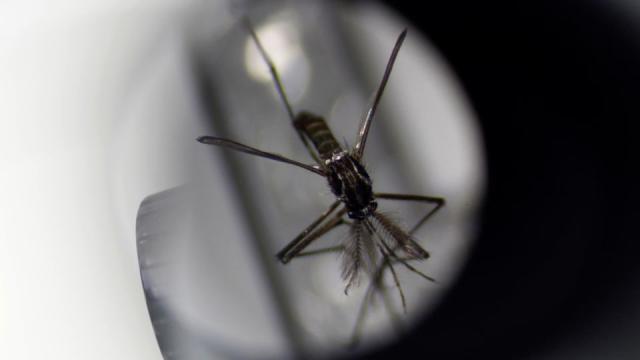
New Isle of Man rubbish tip and recycling centre opens
It is hoped the new development in Braddan will increase recycling rates on the island.
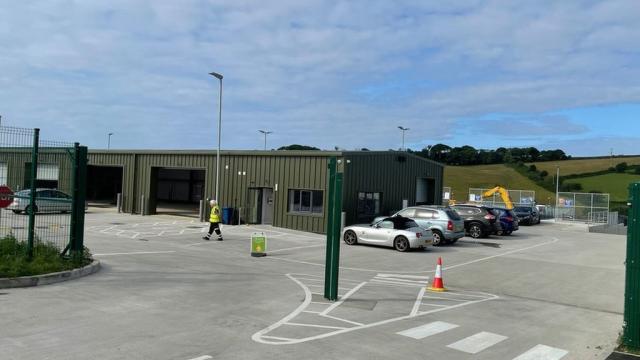
A new £3m rubbish tip and recycling centre on the Isle of Man has opened.
The Eastern Civic Amenity Site in Braddan opened to the public at 08:00 BST.
The development, operated by Douglas Council, features a larger re-use shed, a higher number of recycling and waste skips and increased parking.
Douglas Mayor Natalie Byron-Teare said she hopes it will encourage residents to recycle more than they were at the previous site in Pulrose.
Recycling rates reached about 50% there, but Ms Byron-Teare said the larger tip could see the figure rise to 70% or more.
Any reduction in "residual" waste would save the money spent on its disposal, which is paid for by rate-payers, the mayor added.
The site at Middle Park Industrial Estate will serve the capital, Onchan, Braddan, Santon and Garff.
It has been built by property developer Dandara on behalf of a joint-committee of the local authorities, which share waste management responsibilities for the east of the island.
Work began on the site in 2022 after concerns were raised that the tip in Pulrose had reached maximum capacity.
The tip will be open over summer from 08:00-19:00 Monday to Saturday, and 08:00-16:00 on Sundays and bank holidays.
During winter it will open daily from 08:00-16:00.
Virgin Galactic is launching its first commercial space mission. Here’s what to know
Virgin Galactic, the space tourism company founded by Richard Branson, is ready to launch its first paying customers after nearly two decades of development.
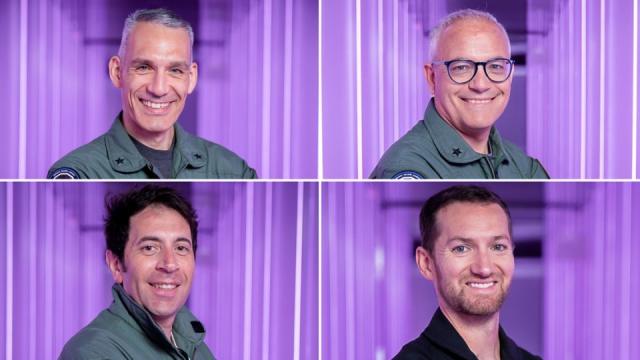
The group’s journey will play out in several stages. It begins at Virgin Galactic’s spaceport in New Mexico, where the passengers will board VSS Unity as it sits attached beneath the wing of a massive twin-fuselage mothership, an aircraft called VMS Eve.
VMS Eve will take off much like an airplane, barreling down a runway before it ascends to more than 40,000 feet. After reaching its designated altitude, VMS Eve will release the VSS Unity, which will then fire its rocket engine for about one minute as it swoops directly upward, sending it vaulting toward the stars.
The space plane will reach supersonic speeds as it hurls upward. And at the peak of its flight, the vehicle will spend a few minutes in weightlessness as it enters freefall and glides back to the spaceport for a runway landing. The entire flight is expected to last about an hour and a half.
The weightless environment can offer scientists a better fundamental understanding of how something works — and reveal interesting information about a material’s behavior in space. Sending research on suborbital missions can also be far cheaper than launching an experiment to the International Space Station, which requires much larger rockets and faster speeds.
But it wasn’t that simple. Virgin Galactic has spent the past two decades working to ready an upgraded version of Rutan’s space plane — designed to be large enough to carry passengers in the cabin — for commercial service.
The company has also been losing money for years, burning through funds as it has attempted to finish its test flights and begin welcoming customers — some of whom paid for their tickets more than a decade ago.
The company has sold about 800 tickets, including 600 at prices up to $250,000 and another couple hundred at $450,000.
The parallels between deep-sea exploration and space tourism are striking: Many of the same people who have ventured to the ocean’s depths have also purchased tickets to space. That includes Hamish Harding, who flew as a Blue Origin passenger in 2022 and died on the OceanGate submersible last week.
Virgin Galactic and Blue Origin have routinely emphasized the importance of safety, saying it is paramount to their individual success as well as the overall industry. Much like deep-sea exploration, however, traveling to space comes with inherent risks.
In a tragic 2014 accident, Virgin Galactic’s space plane broke apart during flight, killing the mission’s copilot, Michael Alsbury. (That test flight was overseen by a third-party company, Scaled Composites, and was operated under an experimental license.)
The FAA does, however, license commercial rocket launches. But its current role requires it to ensure the safety of bystanders and nearby property — not focus on protecting the passengers on board. Currently, paying customers who travel to space must sign “informed consent” documents acknowledging the risks before their flight.
Cambridge University bids to boost waste recycling to 80%
New bins, scanners and miles of conveyor belts should help reduce waste, Cambridge University says.
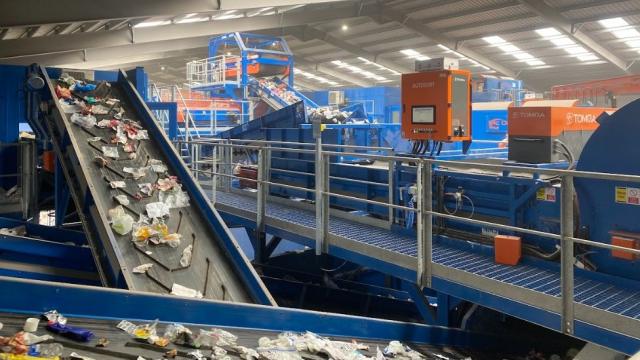
Cambridge University is going to be using new bins, 3D scanners and 22 miles (35km) of conveyor belts in a bid to increase recycling from 50% to 80%.
Staff and students will get two bins to choose from - one for food waste and the other for dry mixed waste.
The university said the "pioneering" project would be "the first of its kind in the UK higher education sector".
A spokesman said the university was "committed to exceptional environmental performance".
The university said in a statement: "Waste will be cleanly sorted into recyclables after it is collected, to reduce confusion and unintentional contamination of materials.
"Food waste will be converted into energy at an anaerobic digestion facility, and the dry mixed waste will be separated into recyclables at a pioneering Materials Recovery Facility (MRF) that can identify and sort recyclables with advanced precision.
"The MRF (run by company Mountain Recycling) uses 22 miles (35km) of conveyor belts and sorting technology including 2D and 3D scanners, and near infra-red separators."
It further said all of the university's dry mixed waste collections would be made by electric vehicles.
"In another UK-first, the university's stock of new wheelie bins are made from 100% post-consumer recycled plastic collected from the local area. These bins can be recycled a further 10 times," it said.
Speaking about the project, which starts in July, Steve Matthews, facilities management operations manager, said: "The new system will allow us to recycle far more materials than before which will make a positive contribution to protecting the environment."
First baby beaver born in 400 years in Staffordshire
Trentham Gardens say the birth of a beaver at the estate was a "remarkable landmark".
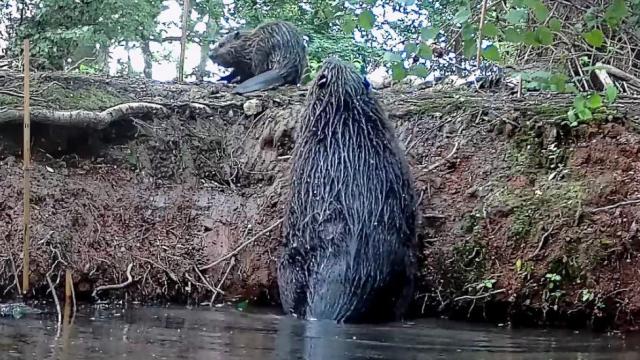
The birth of the first baby beaver in 400 years in Staffordshire has been recorded, a country estate's staff say.
Beaver and wildlife ranger at Trentham Gardens, Harvey Tweats, said the kit appeared healthy and its birth was a "remarkable landmark".
"It is incredible news for the estate and Staffordshire as a whole," he said.
The animals are known for engineering their habitat by felling and coppicing trees, digging canals, burrowing and building dams, creating biodiverse wetlands.
Beavers were hunted to extinction in England and the project aimed to conserve the species.
"For them to be able to breed within just three months just shows that this way of managing this species in a British context works really well," added Mr Tweats.
"This project demonstrates just how successful the relocation of beavers to suitable landscapes can be."
"We're proud to be bringing back this important keystone species to England and can't wait to see the new addition exploring their surroundings."
Flu hits breeding rate of UK's largest bird of prey
Conservationists suspect white-tailed sea eagles have been eating avian flu-infected prey.
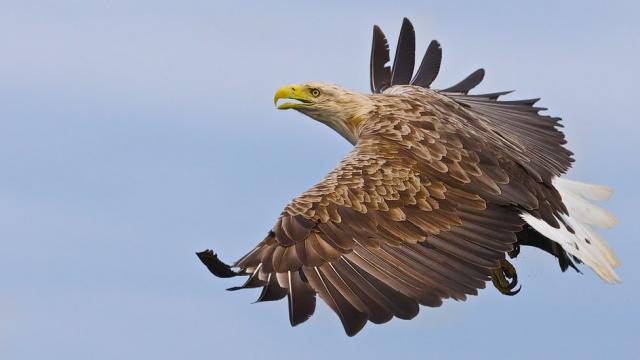
Conservationists fear avian flu has damaged the breeding success of white-tailed sea eagles - the UK's largest bird of prey.
NatureScot said new analysis suggested the proportion of eagles rearing young in Scotland had dropped from 67% in 2021 to 45% last year.
The public agency said it was suspected the raptors had caught or scavenged on birds infected with the virus.
It said the golden eagle, another large bird of prey, was also suffering.
The proportion of golden eagle pairs rearing young was found to have declined from 48% in 2021 to 28%.
The largest declines recorded for both eagle species were in Lewis and Harris in the Western Isles.
Analysis suggested the breeding success of golden eagles fell from 55% to 16%, and for white-tailed eagles it dropped from 66% to 24%.
The study by the British Trust for Ornithology (BTO) used data from the Scottish Raptor Monitoring Scheme.
Avian flu has decimated seabird populations around Scotland's coast, including gannets on Bass Rock and skuas in Shetland.
The first cases of the flu in birds of prey were detected in November 2021, and by April 2022 there were positive tests results for a range of species.
John Allan, NatureScot ornithology advisor, said: "Scotland still has strong eagle populations but these findings are very concerning.
"So far we have had fewer positive test results among birds of prey this year than last year, but it is early in the season and we can't be complacent.
"We intend to repeat this analysis in 2023 to see if breeding success begins to improve."
Mark Wilson, acting head of science for BTO Scotland, said laboratory tests for the virus in dead birds of prey had shown that avian flu could kill both adult and nestling raptors.
The mosquito era: As the world warms, these insects are thriving – and bringing disease
There are very few winners in the climate crisis, but scientists are pretty sure there’s going to be at least one: Mosquitoes.

It has raised fresh concerns about mosquitoes pushing into regions they have not been in for generations – or ever – and what that might mean for the spread of the deadly diseases they transmit.
Rising temperatures allow mosquitoes to grow faster and live longer. Whereas before they would die out during harsh winters in many places, now they have a greater shot at surviving and more time to build up their populations. Heat also speeds up the time it takes for a parasite or virus to mature inside a mosquito.
“The hotter the temperature gets, the shorter that process becomes. So not only are these mosquitoes living longer, but they’re potentially becoming infectious sooner,” said Oliver Brady, an associate professor at the London School of Hygiene and Tropical Medicine.
Heat is also pushing cities to increase their amount of green space, which has a vital cooling effect but could also provide ideal new breeding grounds for the blood-sucking insects.
Researchers looked at data spanning more than four decades in nearly 250 locations and found that more than 70% of them had become more hospitable to mosquitoes.
While most of the approximately 200 mosquito species in the US are harmless, there are about a dozen which can pass on diseases to humans, including chikungunya, dengue, zika and West Nile viruses.
While serious mosquito-borne diseases recmain rare in the US, other countries are not so lucky.
Malaria-transmitting Anopheles mosquitoes have, on average, moved to higher elevations by around 21 feet a year and southward by nearly 3 miles a year, a Georgetown University report found.
It’s a pace that follows climate change and could have significant consequences for areas that have never experienced malaria before and are likely to be unprepared, said Colin Carlson, a global change biologist at Georgetown University and co-author of the report.
Also known as “breakbone fever,” it causes fever, nausea, vomiting, fatigue and diarrhea and, in some cases, internal bleeding and death. There is no cure or specific treatment for dengue, leaving sufferers little choice but to ride out the symptoms.
Experts have said that unusually high levels of rainfall and warmth have provided ideal conditions for the mosquitoes. While scientists are yet to assess the role climate change has played in the outbreak, Carlson said the links seem clear.
“I’m not a betting man, and I would put money on when we go and do that study, it will be climate change,” he said.
Now dengue is knocking on the door of Europe and the US.
“What is surprising is the speed of the spread,” Celine Gossner, principal expert in emerging and vector-borne diseases at the ECDC, told CNN. In just a decade, the number of regions where this mosquito is established has increased three-fold, she said.
Even with this new exposure, however, the US and Europe are unlikely to see huge outbreaks, or large numbers of fatalities from dengue virus.
“The story of future change is really more about big increases in areas that already have dengue, that’s going to get much worse,” Brady said. He pointed to China and parts of India as particularly at risk. “That’s a really scary situation because vast numbers of people live in these areas and even minor changes could potentially be catastrophic,” he said.
Communities already on the front lines of the climate crisis are always going to be most affected by mosquito-borne disease, and that is where investment should be directed, said Shannon LaDeau, a disease ecologist at the Cary Institute of Ecosystems Studies.
But the shift of mosquito-borne diseases into regions like the US and Europe is still likely to be a shock.
“Folks that live in the temperate zone are going to see their way of life change pretty dramatically because they’ve never had to worry about it before,” LaDeau told CNN.
The climate crisis is not all upside for mosquitoes. Some places may simply be getting too hot.
“There’s some threshold after which the chemistry in their body just doesn’t function anymore,” LaDeau said. The bad news is that these places are likely to be getting too hot for humans, too.
There is still much that remains unknown about how mosquitoes will react to the climate crisis. The relationship between climate change and disease is complex, Gossner said.
We know a lot about how temperature changes mosquitoes’ ability to transmit disease, a small amount about how quickly mosquitoes are moving to new places and very little about whether overall mosquito populations are growing, Carlson said.
Scientists are working to develop tools to be able to better assess the link between mosquito-borne diseases and climate change.
There are also vaccines on the horizon for diseases such as dengue and malaria. “That’s a really big deal,” said Carlson. But whether these will be shared equitably around the world is another question, he added.
“It’s a long road to try to understand how better to use those tools. But there’s a lot of hope on the horizon,” Brady said.
Ultimately, tackling climate change will have a huge impact.
The path the world takes on reducing planet-heating pollution will lead to very different futures for mosquito-borne diseases, Brady said. “Aggressive [climate] mitigation would be by far the lowest risk.”
0 Likes
